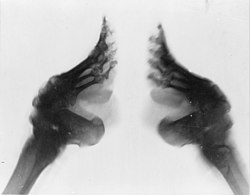| By Sunil Raman BBC News, Delhi |
 The scheme will benefit the poorest of the poor |
The Indian government has announced an ambitious social security scheme which is aimed at benefiting about 390 million poor, non-unionised workers.
Once passed by parliament, the scheme will provide the workers with life insurance and disability protection.
More than a third of India's population of one billion-plus people lives on less than $1 a day.
Last year, the government launched one of the country's most ambitious efforts to tackle rural poverty.
'Revolutionary step'
The draft Unorganised Sector Worker's Social Security Bill, 2007 was cleared at a cabinet meeting presided over by Prime Minister Manmohan Singh on Thursday.
![]()
![]() Corporate social responsibility must not be defined by tax planning strategies alone
Corporate social responsibility must not be defined by tax planning strategies alone ![]()
Announcing the scheme, Parliamentary Affairs Minister Priya Ranjan Dasmunsi said it was a "revolutionary step".
He said the draft legislation would be put before parliament in August.
More than 90% of India's workforce is not represented by organised trade unions.
These workers earn their living as farm labourers, construction workers, brick kiln workers, and many are self-employed, with no access to social security benefits.
Under the new scheme, the non-unionised, casual worker will be entitled to life insurance and health and disability benefits by contributing just one rupee (one cent) a day.

The government and employers will also contribute an equal amount towards.
Those earning less than 6,500 rupees ($160) annually will be designated as living below the poverty line, and their one-rupee share will be paid for by the federal government.
It is estimated that the government will need $22.2bn to implement the scheme.
'Share benefits'
Critics of the scheme say it is an amount the finance ministry may not be happy to part with.
The announcement came within hours of the prime minister demanding that business do its bit for India's poor.

In a strong message to corporate India, Mr Singh reminded it of its responsibilities towards the common man and advocated a "10-point social charter" to share the benefits of economic growth with the less privileged.
"Corporate social responsibility must not be defined by tax planning strategies alone," he told the Confederation of Indian Industry (CII).
Speaking at the CII annual session in the capital, Delhi, he said it was payback time for India Inc.
India's centre-left, Congress party-led government completed three years in power earlier this week and after a string of recent reverses in state elections, it has decided to focus on programmes which will benefit the poor.
In February 2006, the government launched its National Rural Guarantee Scheme under which one member from each of India's 60 million rural households is guaranteed 100 days of work each year.



